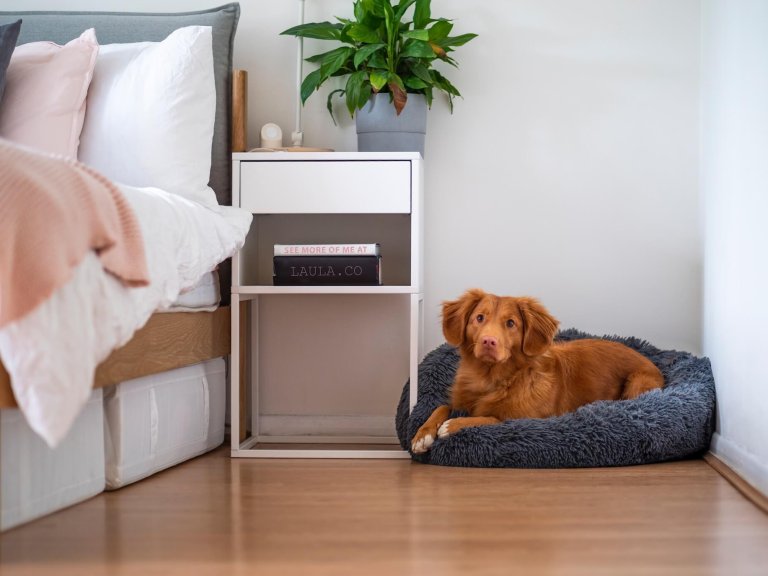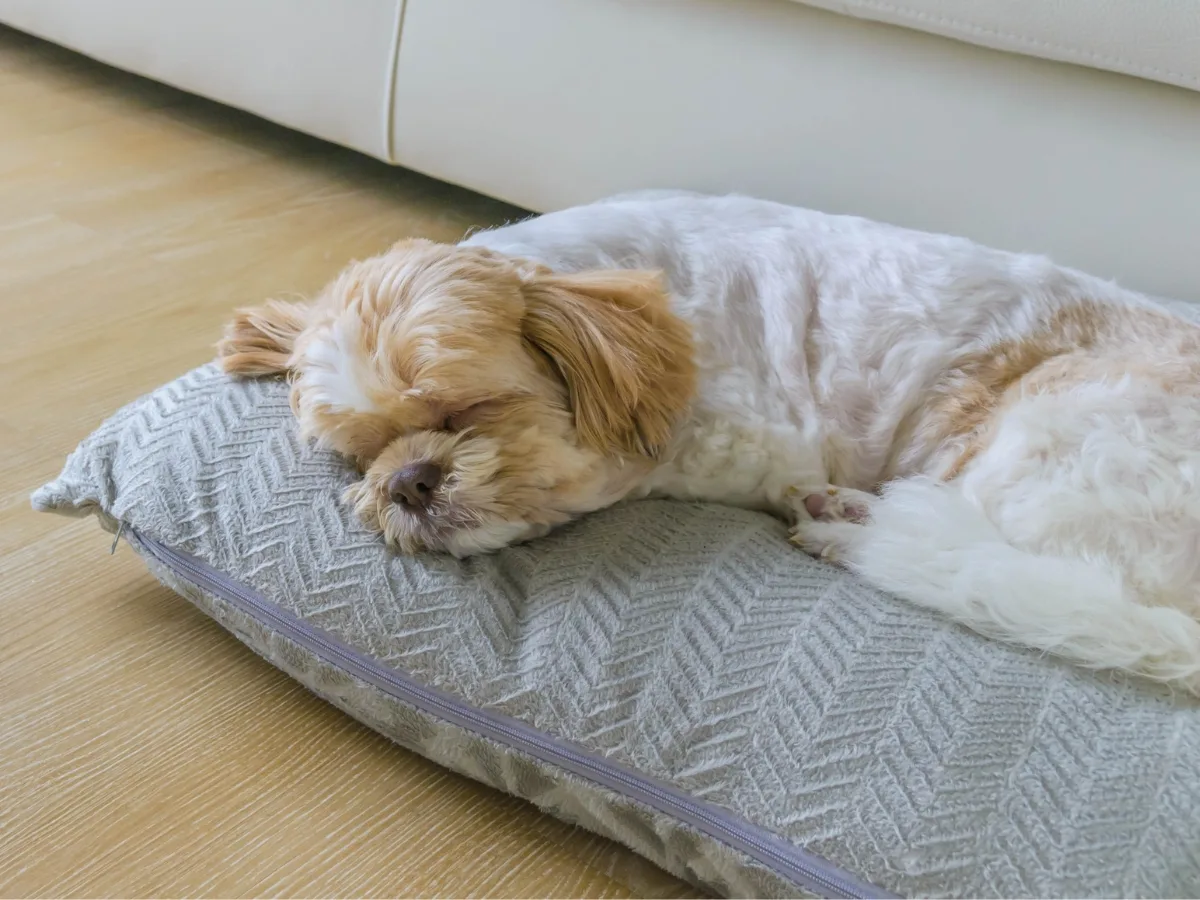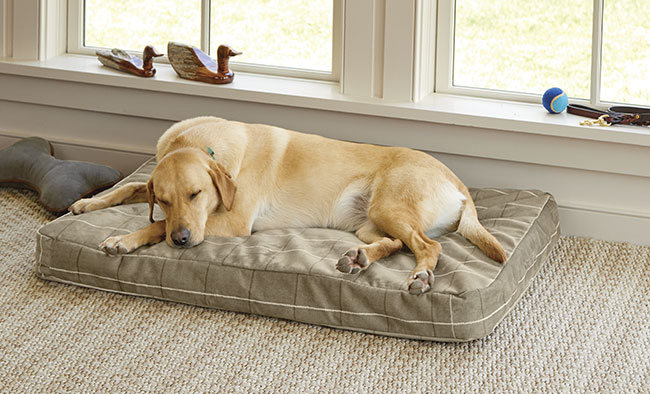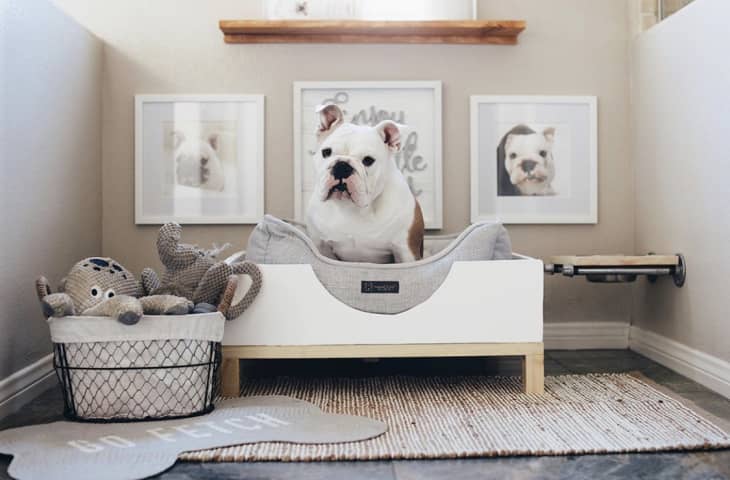Finding the perfect spot for your furry friend’s bed in your bedroom can be a delightful task as you aim to provide them with the utmost comfort. But with countless options to choose from, where exactly is the ideal place? In this article, we explore the various considerations to keep in mind when deciding on the best spot for a dog bed in your bedroom, taking into account factors such as temperature, noise levels, and accessibility. By the end, you’ll have all the knowledge you need to create a cozy haven for your beloved pup within the confines of your own sleeping quarters.
Finding the Perfect Spot: Best Place for a Dog Bed in a Bedroom
When it comes to choosing the best spot for a dog bed in your bedroom, there are several important considerations to keep in mind. Your furry friend deserves a comfortable and cozy resting place, and finding the perfect location is essential to ensure their wellbeing. Here, we will explore various factors that should be taken into account when determining the ideal place for your dog’s bed.

Size of the dog bed
The size of your dog’s bed is a crucial factor to consider when choosing its placement in the bedroom. Ensure that the bed is large enough to accommodate your dog comfortably, allowing them to stretch out and curl up as they please. Consider the available space in your bedroom and select a spot that can easily accommodate the size of the bed without causing any obstructions or overcrowding.
Temperature and air circulation
Your dog’s comfort is greatly impacted by the room temperature and air circulation in their sleeping area. Avoid placing the bed near drafty windows or doors, as this can lead to discomfort or even health issues. Additionally, ensure that the chosen spot allows for adequate airflow, keeping your pup cool in warmer months and warm during colder seasons.
Proximity to doors and windows
While it is important to avoid drafts, it is also beneficial to consider the proximity of your dog’s bed to doors and windows for convenience. Placing the bed near an exit door can make it easier for your dog to access the outdoor area when needed, especially for potty breaks. Similarly, a spot near a window can provide entertainment and stimulation for your dog, allowing them to observe the outside world.
Now that we have discussed the main considerations for choosing a spot, let’s delve into avoiding high-traffic areas to ensure your dog’s tranquility.
Minimizing disruptions
High-traffic areas in the bedroom, such as entryways or paths to closets, should be avoided when determining the placement of your dog’s bed. By minimizing disruptions, your furry companion can enjoy uninterrupted sleep and relaxation. A calm and peaceful atmosphere is crucial for maintaining your dog’s overall wellbeing.
Avoidance of tripping hazards
It is essential to select a spot that is free from potential tripping hazards to keep your dog safe. Avoid positioning the bed in the middle of the room or in narrow walkways where it may obstruct your path. By keeping the bed out of the way, you create a safe environment for both you and your furry friend.
Promoting a sense of security
Dogs, especially those with anxiety or insecurity issues, thrive on a sense of security. Placing their bed in a quiet corner or against a wall can help provide a cozy and secure space that alleviates stress. By creating the right environment, you are giving your beloved pet a place they can retreat to and feel safe in.
Aside from avoiding high-traffic areas, utilizing underutilized spaces can maximize both comfort and functionality in your dog’s sleeping area.

Empty corners
Empty corners can serve as ideal spots for your dog’s bed, providing them with a sense of seclusion and security. By using corners effectively, you can create a designated space for your dog to relax and unwind without sacrificing valuable floor space.
Under desks or tables
If you have limited space in your bedroom, utilizing the area under desks or tables can be a practical solution. This not only makes efficient use of the available space but also provides a cozy nook for your dog. Just ensure that there is ample clearance for your dog to comfortably enter and exit the bed.
Unused alcoves
Make use of any unused alcoves or recessed areas in your bedroom to create a designated sleeping spot for your furry companion. Alcoves provide a secluded and private space that can help your dog feel safe and secure. Consider adding soft lighting or curtains to create a cozy and inviting atmosphere within the alcove.
For senior dogs, there are specific factors to consider when choosing the placement of their bed in the bedroom.
Accessibility and ease of movement
Senior dogs may have mobility issues, so it is crucial to choose a location that allows for easy accessibility and movement. Avoid placing the bed in areas that require your dog to navigate obstacles or climb stairs. Instead, opt for a spot that is easily accessible and ensures your senior pup can move around comfortably.
Cushioning for joints
Senior dogs often experience joint pain or arthritis, so providing proper cushioning in their bed is essential. Selecting a spot away from hard surfaces, such as tiled floors, can help minimize discomfort. Consider placing the bed on a carpeted area or adding extra padding to ensure your senior dog’s joints are properly supported.
Temperature regulation
Older dogs may struggle with regulating their body temperature, so it is important to consider this when choosing the spot for their bed. Avoid placing the bed near drafty areas or direct sources of heat or cold. Maintaining a comfortable and consistent temperature will help keep your senior dog cozy and relaxed.
When considering the overall bedroom layout, several factors need to be taken into account to ensure a harmonious environment for both you and your dog.

Integration with existing furniture
Seamlessly integrating your dog’s bed with existing bedroom furniture is not only aesthetically pleasing but also maximizes the use of available space. Consider matching the style and color of the bed to your existing furniture for a cohesive look that blends well with the overall bedroom décor.
Flow and balance within the room
Achieving a balanced and harmonious bedroom layout is important for creating a serene ambiance. Ensure that your dog’s bed does not disrupt the flow of the room or impede movement. By carefully considering its placement in relation to other furniture, you can maintain a sense of balance and tranquility in your bedroom.
Available wall space
If your bedroom has limited floor space, consider utilizing the available wall space for your dog’s bed. Wall-mounted beds can be a practical and space-saving solution. This frees up valuable floor area while still providing your dog with a designated spot to rest.
Noise and disturbances in the bedroom can impact your dog’s sleep quality, so it is essential to address these factors when choosing the placement of their bed.

Proximity to electronic devices
Electronic devices, such as televisions or speakers, can emit noise that may disrupt your dog’s sleep. Avoid placing the bed near these devices to ensure a quiet and peaceful environment for your furry friend.
Soundproofing considerations
If your bedroom is located in a noisy area, consider soundproofing measures to minimize disturbances for your dog. Placing the bed in a part of the room that is insulated from external noise can help create a more serene sleeping environment.
Seclusion from household activities
Your dog’s bed should be located away from areas of high activity in your bedroom to ensure minimal disturbances. Avoid placing the bed near workspaces or areas where household chores are performed. By separating your dog’s sleeping area from these activities, you can provide them with a calm and restful environment.
Creating a cozy nook for your dog is essential to ensure their comfort and relaxation in the bedroom.
Use of curtains or screens
Incorporating curtains or screens around your dog’s bed can create a cozy nook that offers both visual privacy and a sense of enclosure. This can help your dog feel safe and secure in their own space, away from external distractions.
Soft lighting options
Lighting plays a significant role in creating a warm and inviting atmosphere. Consider using soft lighting options, such as table lamps or string lights, near your dog’s bed. This gentle illumination can promote relaxation and tranquility, enhancing their overall sleeping experience.
Incorporating plush bedding
Choosing plush and comfortable bedding is essential to create the ultimate cozy nook for your dog. Opt for soft and supportive materials that cater to your dog’s individual preferences. By providing them with a bed that meets their needs, you ensure they have a cozy haven to retreat to whenever they need rest.
Elevating your dog’s bed offers various benefits that should be considered when deciding on its placement.
Avoidance of drafts
Keeping your dog’s bed elevated off the floor helps to avoid drafts, which can cause discomfort or even health issues. By choosing a spot for the bed that is raised, you provide an additional layer of insulation and protection from the cold air that can circulate near the ground.
Improved cleanliness
Elevating your dog’s bed makes it easier to keep clean by preventing it from coming into contact with dirt or debris on the floor. This ensures that your pet has a clean and hygienic resting place, which is vital for their overall health and wellbeing.
Prevention of damage by pets or children
If you have other pets or young children in your household, elevating your dog’s bed can help protect it from potential damage. By providing a designated spot that is off-limits to pets and children, you can ensure that your dog’s bed remains intact and undisturbed.
When choosing the spot for your dog’s bed, it is important to consider their individual preferences and needs.
Observing preferred resting spots
Dogs often have preferred resting spots in the house, such as sunny spots or areas near family members. Observing your dog’s behavior can help you identify their preferred spot and choose a location for their bed that aligns with their natural inclinations.
Familiar scents and objects
Placing your dog’s bed near their favorite toys, blankets, or items with familiar scents can promote a sense of comfort and security. Familiar objects can provide a sense of reassurance, helping your dog feel more relaxed and settled in their bed.
Adjustment based on dog’s age and breed
Different dog breeds and ages have varying needs and preferences. For example, puppies may benefit from being closer to their human family members while senior dogs may prefer a quieter area. Adjust the placement of your dog’s bed according to their specific age and breed requirements to ensure their utmost comfort and happiness.
Proper maintenance of your dog’s bedding is crucial to promote a clean and healthy sleeping environment.
Easy access for cleaning
When choosing the spot for your dog’s bed, consider the ease of access for cleaning purposes. Opt for a location that allows you to easily remove and clean the bedding regularly, promoting cleanliness and hygiene for your furry friend.
Choosing washable materials
To maintain a clean and fresh sleeping area, choose dog bedding made of washable materials. This ensures that you can easily remove and clean the bedding whenever necessary, preventing the buildup of dirt, allergens, and odors. Washable materials also provide convenience for pet owners, making the cleaning process hassle-free.
Regularly eliminating allergens
If you or your dog suffers from allergies, it is important to choose bedding materials that are hypoallergenic and regularly clean the bed to eliminate allergens. This helps create a healthy and allergy-free environment, promoting better sleep quality for both you and your dog.
In conclusion, finding the perfect spot for your dog’s bed in the bedroom involves considering various factors such as size, temperature, and proximity to doors and windows. Avoiding high-traffic areas, utilizing underutilized spaces, and addressing specific needs of senior dogs are crucial for creating a comfortable and safe sleeping environment. Considering the bedroom layout, minimizing noise and disturbances, and creating a cozy nook further enhance your dog’s overall wellbeing. Elevating the bed, taking into account your dog’s preferences, and maintaining proper bedding hygiene complete the comprehensive guide to choosing the best place for a dog bed in a bedroom. By prioritizing your dog’s comfort and needs, you can create a sanctuary that promotes relaxation and happiness for your beloved furry companion.






